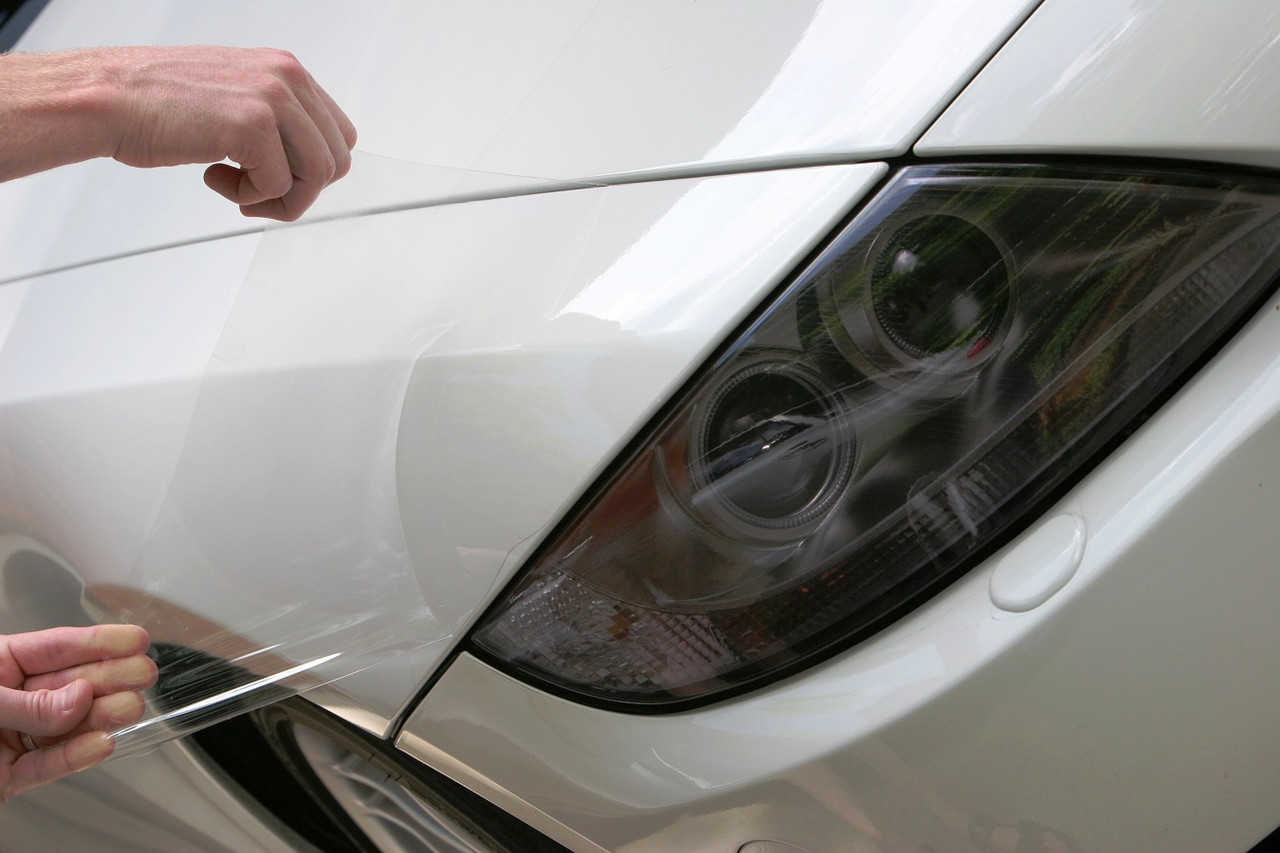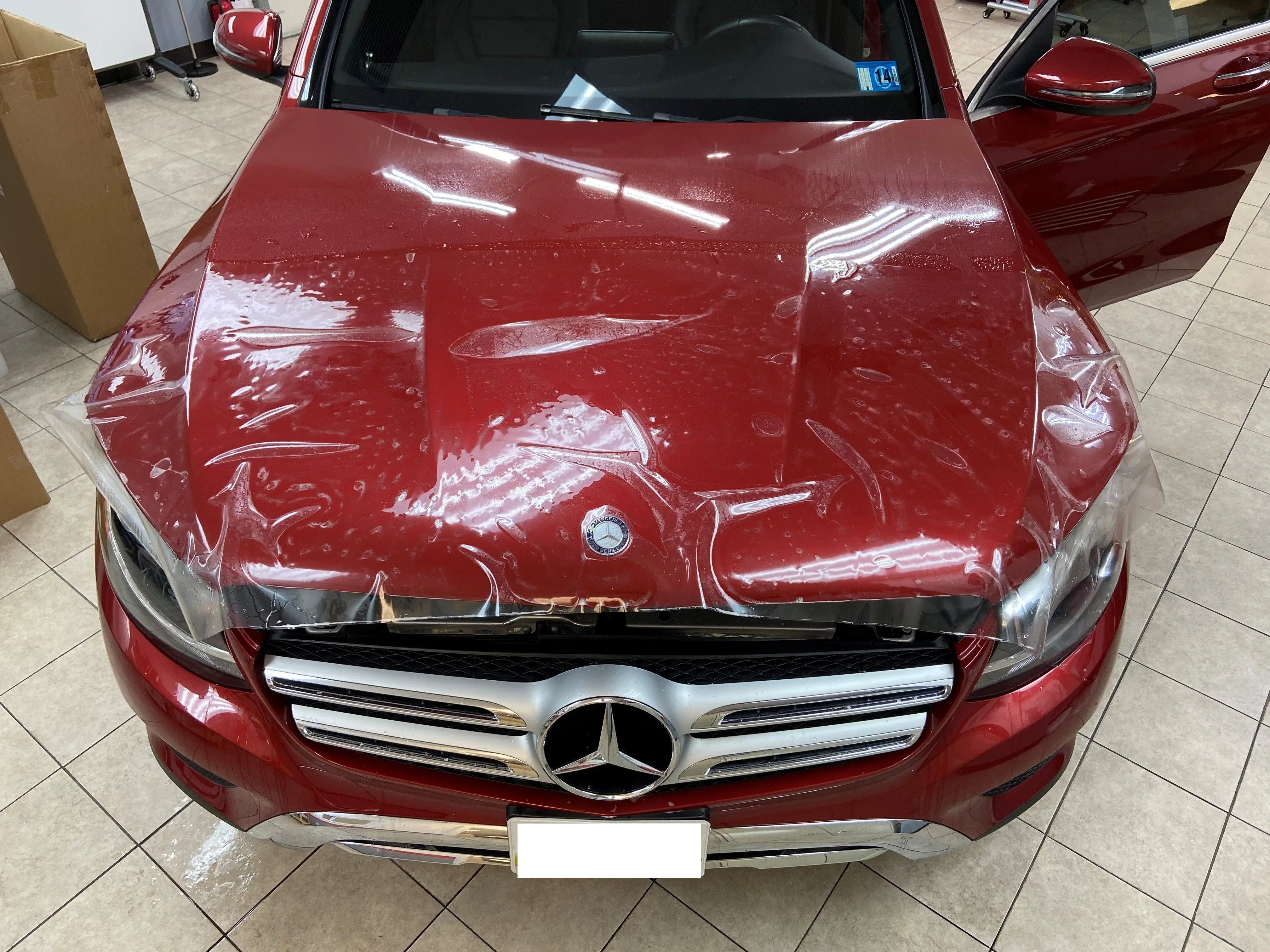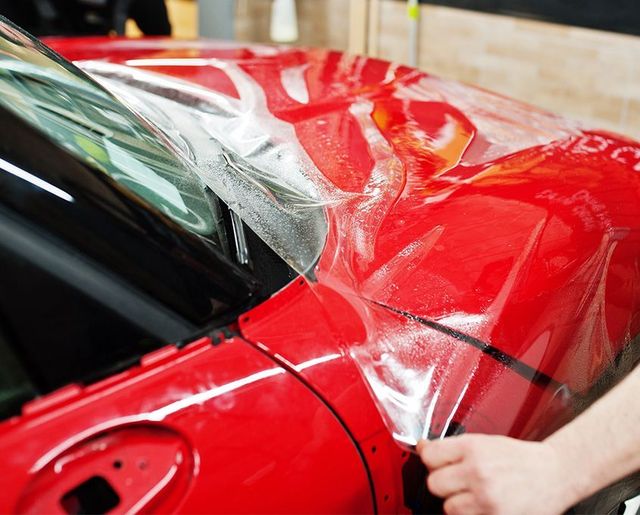Everything About Paint Protection Film: Comprehending Its Necessary Role in Car Care
Paint Protection Film (PPF) has come to be an essential aspect of automobile care in the last few years. This transparent guard offers to protect a cars and truck's outside from typical risks such as scratches and environmental damages. Understanding the auto mechanics behind PPF and its different benefits is vital for vehicle owners. Nonetheless, lots of remain unaware of the various types offered and the setup procedure included. What elements should one take into consideration prior to applying PPF to their car?

What Is Paint Protection Film?
Paint protection film (PPF) is a clear, resilient layer designed to secure a car's paint from damage. This innovative product, frequently made from polyurethane, is crafted to withstand scrapes, chips, and pollutants, ensuring the vehicle keeps its visual charm with time. PPF can be put on different surfaces, consisting of the hood, fenders, and bumpers, providing targeted protection where it is most needed.The film is not just resistant to damage but also provides a self-healing home; minor scratches can go away with direct exposure to warm. Additionally, PPF works with various vehicle finishes and can be customized when it come to thickness and gloss degrees. Its application has actually come to be progressively preferred among car enthusiasts and everyday chauffeurs alike, as it preserves the vehicle's worth and appearance. By buying paint protection film, proprietors can delight in a pristine outside while decreasing upkeep initiatives.
Just How Does Paint Protection Film Work?
Paint protection film functions by developing a resilient barrier that safeguards surfaces from the ground up and various other physical damage. In addition, it gives securing against harmful UV rays, which can discolor and weaken paint gradually. Several modern-day films likewise integrate self-healing innovation, allowing small abrasions to disappear with warmth exposure.
Protection From Scratches
Shielding an automobile's outside from scrapes is a critical issue for many owners, and paint protection film (PPF) uses a trustworthy solution. This clear, polycarbonate urethane film is made to abide by the car's surface, developing a barrier that takes in effects from road particles, branches, and other prospective risks. The film's elasticity allows it to extend and comply with numerous shapes, making it appropriate for various car designs. SpeedEFX Clear bra Centennial. Additionally, PPF is self-healing; small scratches can vanish with warm exposure, keeping the automobile's look. By serving as a robust shield, paint protection film effectively minimizes the risk of unpleasant acnes, protecting the aesthetic honesty and resale worth of the car for years ahead
UV Ray Protecting
A car's outside faces several hazards, consisting of harmful UV rays that can fade paint and break down surfaces in time. Paint protection film (PPF) works as a formidable barrier against these unsafe ultraviolet rays. Made from innovative polymer materials, PPF obstructs a significant percent of UV radiation, preventing it from passing through the vehicle's clear coat and paint layers. This securing impact not only maintains the car's shade and surface yet also prolongs the life-span of the paint. By effectively soaking up and showing UV radiation, paint protection film decreases the risk of oxidation and discoloration. Car proprietors that buy PPF can appreciate enhanced aesthetics and increased resale worth, knowing their auto is safeguarded versus the adverse results of sun exposure.
Self-Healing Technology

Benefits of Paint Protection Film
Paint Protection Film (PPF) supplies numerous advantages for automobile proprietors looking for to preserve their automobile's look and worth. Among the main advantages is its capability to protect the vehicle's paint from square one, chips, and ecological pollutants. This layer of protection aids preserve the manufacturing facility finish, avoiding costly painting or detailing. Furthermore, PPF is immune to UV rays, which can trigger fading gradually, consequently maintaining the vehicle's aesthetic appeal.Another significant benefit is the film's self-healing residential or commercial properties; small scrapes can vanish with warmth direct exposure, making certain the automobile stays visually beautiful. PPF is also simple to preserve, requiring just regular washing to maintain it looking fresh. Moreover, using paint protection film can boost resale value by demonstrating that the car has been well cared for. Generally, PPF is a smart financial investment for those committed to protecting their car's problem and prolonging its life-span.
Different Sorts Of Paint Protection Film
Various sorts of Paint Protection Film (PPF) deal with various requirements and preferences among automobile owners. Clear bra films are among one of the most popular choices, giving a transparent layer that protects the lorry's paint without altering its look. These films are ideal for those who wish to maintain the initial look of their car while protecting it from the ground up and road debris.Another type is self-healing film, which features a distinct polymer that can fix small scrapes click here and swirl marks when subjected to heat. This type supplies boosted durability and aesthetic allure. Furthermore, tinted PPF is available for those aiming to personalize the appearance of their car, permitting an unique surface while still giving protection.Lastly, textured films are made for particular surfaces, such as matte coatings, ensuring that the safety high qualities do not jeopardize the lorry's design. Each sort of PPF offers unique objectives, enhancing both protection and personalization.
Setup Process for Paint Protection Film
The setup procedure for paint protection film starts with careful surface prep work to assure suitable bond. This includes cleaning, brightening, and potentially correcting the car's paint to get rid of any kind of imperfections. Following preparation, numerous application methods are used to successfully apply the film without bubbles or folds.
Surface Prep Work Tips
Before applying paint protection film, thorough surface prep work is important to assure ideal adhesion and durability of the film. This procedure starts with a comprehensive cleaning of the automobile's surface area to remove dirt, crud, and pollutants. A top notch automobile soap must be used, complied with by rinsing and drying out with a microfiber towel to prevent scrapes. Next, any type of existing wax or sealants need to be removed, usually using an isopropyl alcohol service to assure an entirely bare surface area. Checking for blemishes such as scrapes or swirl marks is crucial, as these can influence the film's look and performance. Ultimately, cautious masking of surrounding areas helps protect them throughout the setup procedure, assuring a tidy and exact application.

Application Strategies Explained
Understanding the application strategies for paint protection film is necessary for accomplishing a perfect surface. The setup procedure begins with cautious positioning of the film on the automobile's surface area, guaranteeing exact placement over the intended area. Once placed, a service of water and soap is commonly used to assist in repositioning and bubble elimination. Smooth, regulated pressure is used making use of a squeegee, beginning with the facility and working outside to get rid of air pockets. Heat might be applied with a warmth weapon to enhance attachment and assist in contouring around curves and sides. After reducing excess film, the edges are sealed to avoid lifting. Appropriate strategy and interest to information during setup inevitably boost the film's sturdiness and aesthetic allure.
Upkeep and Look After Paint Protection Film
Appropriate upkeep and treatment are vital for making sure the long life and efficiency of paint protection film. Normal cleaning is crucial; it is recommended to wash the automobile with a pH-balanced, non-abrasive soap to prevent any kind of damages to the film. Using soft microfiber towels for drying will certainly assist avoid scratches.Avoiding automated vehicle cleans with brushes is a good idea, as these can raise the edges of the film. Furthermore, it is essential to quickly remove contaminants such as bird droppings, tree sap, and road tar, as they can break down the film over time.For excellent protection, waxing the film every few months can enhance its shine and durability, however care should be taken to utilize waxes that are risk-free for clear films. Routine inspections for any kind of indications of lifting or gurgling should also be conducted, enabling for prompt repair services to preserve the honesty of the protection.
Often Asked Questions
How Long Does Paint Protection Film Usually Last?
The long life of paint protection film normally ranges between five to 10 years. Factors impacting its life-span consist of environmental problems, maintenance methods, and the top quality of the film applied, affecting general efficiency in securing the lorry's surface area.
Can Paint Protection Film Be Gotten Rid Of Without Damaging the Paint?
Getting rid of paint protection film can be done securely, typically without damaging the underlying paint. Nonetheless, successful removal depends upon the film's age, application method, and the surface problem, needing mindful technique to assure paint integrity.
Is Paint Protection Film Visible Once Installed?
When installed correctly, paint protection film is made to be almost undetectable. SpeedEFX Clear bra Centennial. Nonetheless, some individuals might see a small luster or appearance difference, relying on the automobile's paint and the film's high quality
Does Paint Protection Film Protect Against UV Rays?
The inquiry of whether paint protection film protects versus UV rays arises frequently. Certainly, this film is designed to secure the vehicle's paint from harmful ultraviolet radiation, aiding preserve the vehicle's look over time.
Will Paint Protection Film Influence My Lorry's Resale Value?
The impact of paint protection film on a vehicle's resale value can be positive, as it protects the paint's problem. Potential buyers might have varying opinions concerning its visibility, affecting total marketability and viewed value.